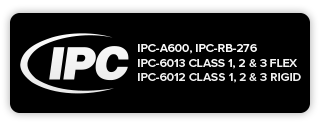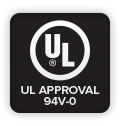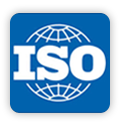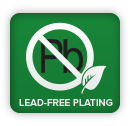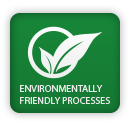


UL Standards
Why UL Standards?
UL does not "approve" products. Rather it evaluates products, components, materials and systems for compliance to specific requirements, and permits acceptable products to carry a UL certification mark, as long as they remain compliant with the standards. UL offers several categories of certification. Products under its listing service are said to be "UL Listed," identified by the distinctive UL mark. In some cases, a component may be "UL Recognized," meaning UL has found it acceptable for use in a complete UL Listed product. Other products may be "UL Classified" for specific hazards or properties. UL maintains a directory of more than 3 million products through a publicly available, online database.
A manufacturer of a UL-certified product must demonstrate compliance with the appropriate safety requirements, many of which are developed by UL. A manufacturer must also demonstrate that it has a program in place to ensure that each copy of the product complies with the appropriate requirements. UL conducts periodic, unannounced follow-up inspections at manufacturers' locations to check ongoing compliance. If a product design is modified, a representative example may need to be retested before a UL mark can be attached to the new product or its packaging.
UL has developed more than a thousand Standards for Safety, many of which are American National (ANSI) Standards, and evaluates nearly 20,000 types of products. A typical standard for electronic products includes not only requirements for electrical safety, but also spread of fire and mechanical hazards. UL evaluates products for compliance with specific safety requirements. UL certification does not guarantee the product will perform acceptably or that it is safe under all conditions (such as product misuse). UL develops its Standards to correlate with the requirements of model installation codes, such as the National Electrical Code.
The UL Mark does not carry any legal weight beyond that of any other trademark. In this sense, it is different from the CE Marking or the FCC Part 15 requirements for electronic devices, which are required by law. In practice, however, it may be extremely difficult to sell certain types of products without a UL Mark. Large distributors may be unwilling to carry a product without UL certification, and the use of noncertified equipment may invalidate insurance coverage. It is common practice in many fields to specify UL Listed equipment or UL Recognized materials. Local jurisdictional authorities, such as building, electrical and fire inspectors, are charged with ensuring that construction in their jurisdictions complies with adopted building codes. Since UL Standards are coordinated with the generally adopted building codes building inspectors accept the UL Mark on a product as evidence of compliance with the building codes without requiring additional evidence or investigation.
In the past 20 years, great strides have been made in harmonizing international safety standards. For example, manufacturers can obtain certification to both U.S. and Canadian national standards through a single UL certification process. The label for products certified for both Canada and the United States includes "C" and "US" outside of the UL logo.
The UL Mark differs significantly from the European CE Marking. The CE Marking is a manufacturer's declaration that a product complies with the essential requirements of the applicable European laws or directives regarding safety, health, environment and consumer protection while the UL Mark indicates compliance with UL Standards. For the CE Mark, except for high risk products such as certain medical products, manufacturers self-declare compliance with these requirements, whereas the UL Mark requires independent third-party certification from UL. A product that bears a CE Marking may also bear additional certification marks such as the UL Mark.
Contact Us

